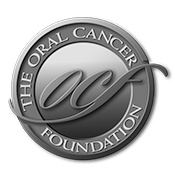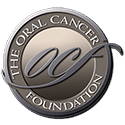The high mortality rate from oral cancer is due to several factors, but undoubtedly, the most significant is delayed diagnosis. Studies have demonstrated that the survival and cure rate dramatically increase when oral cancer is detected in its precancerous stage or as an early stage disease. For example, the 5-year survival for patients with localized disease approximates 80% compared to 20% for those with distant metastases. Unfortunately, approximately two thirds of patients at time of diagnosis are symptomatic, and over 50% display evidence of spread to regional lymph nodes and metastases. Given the significant morbidity and mortality associated with advanced oral cancer and its treatment, the need to provide clinicians with an accurate diagnostic technique that will increase the detection of early stage oral cancer has been compelling.
Advances in the early detection of oral cancer are unfolding and analogous to those made in the advances for cervical cancer. In the early 1950’s, cervical cancer was the second leading cause of cancer deaths in American women. The disease was diagnosed by biopsy, which was usually triggered by advanced symptoms such as persistent spotting and bleeding. Cervical cancer, like oral cancer, is highly curable when detected at an early dysplastic stage and highly morbid when detected at a late, symptomatic stage. By the late 1960’s, cervical cancer dropped to the seventh leading cause of cancer deaths in American women. The difference was due to the America female population becoming informed about cervical cancer and the opportunity for early detection, the compliance of the GYN professional community to offer screenings that were well done, and the widespread utilization of brush cytology, specifically, the cervical Papanicolaou (PAP) smear. These changes have resulted in a reduction of cervical cancer deaths in the United States by 74%.
Brush cytology has the potential to assist the diagnostic portion of the “screening gap” which currently challenges the early detection of many epithelial cancers, including oral cancer. It is only one component and we will still need an informed public, and a compliant group of dental and medical professionals who are knowledgeable about proper screening techniques. Brush cytology can be a noninvasive means of diagnosing dysplasia and early carcinoma in those patients who are either asymptomatic or in those with minor symptoms who do not warrant immediate biopsy. The mechanism of cytology, regardless of its application to cervical, bladder or oral mucosal lining, is based upon the fact that dysplastic and cancerous cells tend to have fewer and weaker connections to each other and to their neighboring normal cells in the surrounding tissue. Dysplastic and cancerous cells therefore, tend to “slough off” or exfoliate preferentially and can easily be collected from the surface of the lesion. A sample of these cells applied to a microscope slide will often contain abnormalities if harvested from a dysplastic or cancerous lesion.
The success of the Pap smear was a primary impetus for a number of studies conducted in the mid1960’s examining the sensitivity and specificity of oral exfoliative cytology. Exfoliative cytology was thought of as a technique that could facilitate and accelerate clinical and histopathologic recognition of oral cancer. The use of oral cytology for large, advanced and obviously malignant lesions is not indicated, since such growths always require a definitive biopsy-obtained diagnosis. In contrast, the value of cytology lies in the identification of early stage oral cancers and dysplasias whose clinical appearance is often innocuous or trivial. The use of oral cytology can be a means to accelerate biopsy of these clinically harmless-appearing cancers that would have otherwise been neglected.
Despite the initial high degree of interest and research, traditional, manual oral cytology currently is not utilized as a method of diagnosing oral precancers and cancers. Although many authors initially concluded from their data that oral cytology could serve as a useful adjunct to biopsy, the current general perception among both dentists and physicians is that the sensitivity of oral cytology is not sufficient to warrant its widespread use as a screening modality to triage visible lesions.
There are several reasons why traditional oral cytology has proven to be of little value in detecting oral dysplasias and cancers. When cytologic instruments are used in the mouth to diagnose precancers and cancers, their accuracy is relatively low. Specifically, exfoliative cytology performed on oral cancers has high false negative rates, which can exceed 30%. Furthermore, the effectiveness of exfoliative cytology for detecting dysplasia is even more doubtful, with false negative rates reported as high as 63%.
These poor results are due, in part, to the fact that cytology instruments do not sample the deepest layers of the oral lesion. This is essential, since unlike cervical cancer, the deepest layer of the lesion, the basal cell layer, is often the only layer that contains abnormal cells within an oral precancerous or cancerous lesion. Furthermore, since the sensitivity of cytology is often dependent on a tedious visual search for a potentially rare abnormality on the microscope slide, the precancerous or cancerous cells collected on the slide may not have been detected by the laboratory pathologist. This results from the fact that although abnormal cells may preferentially exfoliate from a dysplastic lesion, they are often vastly outnumbered on the microscope slide by the enormous numbers of normal cells that exfoliate due to constant turnover. For example, a cervical Pap smear from a patient with carcinoma-in-situ may contain 300,000 normal cells with only a dozen abnormal cells scattered among them. Several recent studies have demonstrated that women who develop advanced cervical cancer despite a history of “negative” Pap smears often experienced one or more false negative smears determined as such because they contained very few abnormal cells. In oral cytology, this false negative dilemma is exacerbated by two additional factors: 1) the number of abnormal cells available for sampling may be limited by the keratinized nature of many oral lesions and, 2) the high rate of epithelial turnover in the mouth may further numerically dilute the few abnormal cells obtained in the smear.
For cervical cancer, the false negative problem inherent in cytological screening has not deterred the use of the Pap smear, but has resulted in new recommendations from the CDC that HPV testing be done along with the pap test, as an infection with an oncogenic version of the human papilloma virus is a mandatory precursor event to development of the cervical cancer.
The oral brush biopsy was introduced to the dental profession in 1999. This biopsy method utilizes an improved brush to obtain a complete transepithelial biopsy specimen with cellular representation from each of the three layers of the lesion: the basal, intermediate, and superficial layers. Unlike previous cytology instruments, which collect only exfoliated superficial cells, when used properly and rubbed against a an area of suspect tissue aggressively (to the point of minor bleeding) the biopsy brush penetrates to the basement membrane, removing tissue from all three epithelial layers of the oral mucosa, although as with all brush collection methods it does not maintain the architecture of the cells relationship to each other.. The oral brush biopsy does not require topical or local anesthetic and causes minimal bleeding and pain. The brush biopsy instrument has two cutting surfaces, the flat end of the brush and the circular border of the brush. Either surface may be used to obtain the specimen.
Brush biopsies are utilized routinely in the detection of precancer and cancer in other organ systems. Examples of well-known applications of brush biopsies include fiberoptic bronchoscopy (bronchial), ureteral retrograde brush biopsy (renal or ureter tissue), cholangiography (bile duct stricture), pancreatic ductal brush biopsies and others, including endometrial, nasopharynx, and GI tract applications (rectal, gastric, esophageal, colon).
One major problem inherent in current oral cancer screening is the US, is that by visual examination alone, precancers and early stage oral cancers are often inadequately identified, and if professionals are not actively engaged in a program of opportunistic visual and tactile screening of their patient populations, lesions may easily be overlooked and neglected.
It is well established that oral lesions which appear innocuous may occasionally harbor dysplasia or cancer and that a delay in diagnosis may limit treatment options, ultimately resulting in a poor prognosis for the patient. In essence techniques such as brush collection systems are completely dependent on professionals that are engaged in the DISCOVERY process, and engage in opportunistic screening to find areas of suspicion. No discovery – no opportunity for sampling of the suspect tissue with the brush systems.
The results of brush biopsy studies demonstrate that the tool can be reliably utilized on oral lesions as a method of confirming their benign nature and more importantly, revealing those that are precancerous and cancerous when they are not clinically suspected. The role for sampling systems such as the brush is to help determine the true nature of lesions which would not otherwise receive any further testing, i.e. lesions which are not judged to be sufficiently suspicious on visual inspection to be referred for immediate incisional biopsy. It is a method of identifying unsuspected oral cancers found during a visual examination, at early and curable stages, if the professional practitioner is engaged in routine opportunistic screening by means (visual and tactile) that would reveal suspect areas to be sampled.
The brush biopsy provides dentists with a diagnostic screening test similar to a Pap smear. Whereas the Pap smear is a procedure performed on all women and a brush biopsy is used only in patients with a visible mucosal spot, both tests are adjuncts to the clinical examination and are used to identify a disease at an early and curable stage, both are simple to perform, office-based, painless tests; and both procedures can be integrated into the daily routine of practice. Given the difficulty in clinically differentiating premalignant and early malignant oral lesions from those that are benign, the brush biopsy allows practitioners to test lesions that are encountered daily.
When a positive result is returned by the bush biopsy pathology, it cannot be used as the conclusive determination of malignancy, and a conventional, gold standard, incisional or punch biopsy must be performed.




